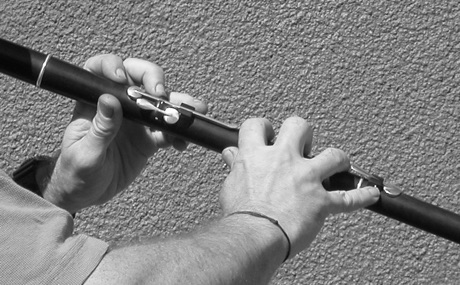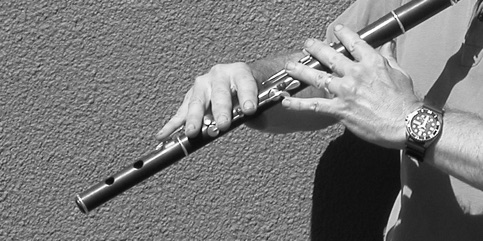Styles of Grip


The other way of holding the flute, the flat fingered or piper’s grip is so called because it resembles the way in which a pipes chanter, or these days, a low whistle is held, with the holes being blocked not by the finger tips but by the first joints of the fingers, so that they extend out over the flute, like this...

This causes problems with keys which are in the standard position, and thus intended for those who play with the classical grip. The most difficult to overcome is the position of the left thumb which because it is on the bottom of the flute will now not reach the Bb touch. ( you can see how the thumb is right beside this key with the classic grip in the first photo above)
The other two problems are the G# which as you can see directly above is now too far up the flute for the left hand little finger, and in some but not all cases, the long F and long C which may be too close to the centre line and their blocks may prove uncomfortable to the flat fingered player. Have a look here, for photos of a block mounted flute which has keys set up for the flat fingered player.